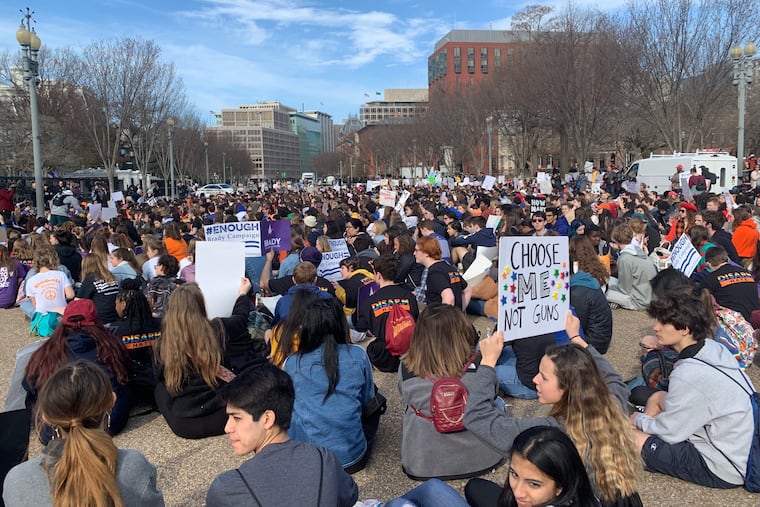We need to talk about guns and suicide | Opinion
Suicides by gun death are an epidemic. Here are some solutions.

These are challenging times for those fighting to prevent gun violence and suicide. This spring, we lost two student survivors of the tragedy in Parkland and the father of a child murdered at Sandy Hook. A couple weeks ago, while we do not yet know if it was a suicide, we lost a survivor of the Columbine High School shooting who was open about turning to opioids to dull the pain. In the face of loss, this is a moment to call attention to the connection between firearms and suicide so that we can save lives.
Approximately half of all American suicide deaths involve firearms, and nearly two out of every three American firearm deaths is a suicide. To put this in perspective, nearly 24,000 Americans died by suicide using a firearm in 2017, a number large enough to make it one of the top 15 causes of death in the U.S. In fact, more people die by suicide using a firearm than die by homicide by all methods combined.
These are difficult conversations. But they’re too important not to have. The national suicide rate has risen by over 30% since 2000, and increased every year since 2005. Clearly, even as the mental-health community continues to make progress on how we treat the issue, our approach to suicide prevention is not working. We need to do something different.
The American Association of Suicidology and Brady are working to expand the national conversation on gun violence and suicide prevention. This effort isn’t about being for or against firearms. It’s simply about doing all we can to prevent suicide. We can respect the rights and culture of firearm owners while also acknowledging the role of firearms in suicide.
As a nation, we must rally behind the importance of safe storage of personal firearms. That means keeping guns unloaded, separate from ammunition, in a locked location such as a gun safe or lockbox. For those who want their firearm to be ready at a moment’s notice, biometric lockboxes that open based on fingerprints and other options allow for relatively quick but not unrestricted access.
The presence of a firearm in the home increases the risk for suicide by 300%. That number increases dramatically when the firearm is stored unsafely. That’s why firearms should be stored away from the home when anyone who lives there is experiencing a difficult time emotionally. It’s the same as having somebody hold our car keys when we’ve had too much to drink. Storage options like these also help protect children in the home. Children often know where unlocked weapons are stored even when parents think they are safely hidden.
Additionally, Congress must pass evidence-based legislation proven to be associated with lower suicide rates. This doesn’t mean overturning the Second Amendment or banning firearms. It means promoting legislation supported by the majority of American firearm owners, like extreme risk protection orders, mandatory waiting periods, permit to purchase laws, and universal background checks. Congress can’t solve gun violence on its own, but it has a role to play. It must have the courage to act.
Individual states can make a difference as well by passing extreme risk laws, such as the one under consideration in Pennsylvania. These types of orders are often connected to mass shootings, but they play a significant role in allowing family members to temporarily remove guns from a loved one who poses a danger to themselves. There is emerging evidence that states with extreme risk laws have lower suicide rates. It’s clear this type of legislation can and will save lives.
Many argue that if we stop someone from using a firearm to die by suicide, they’ll simply find another way. But research has shown time and again this isn’t actually the case. Additionally, firearms are so much deadlier than other methods: 85-95% of all firearm suicide attempts result in death. Suicide attempts by all other methods combined, on average, result in death only 3% of the time. Given that 70% of those who survive a suicide attempt never attempt again, giving somebody that second chance — a second chance rarely provided by firearms — is vital.
In the wake of the recent tragedies in Columbine, Parkland, and Sandy Hook — not to mention all those who die by suicide with a firearm every day — we must forge a path forward. By having the courage to take on these difficult conversations, we honor the lives of those we have lost, and we protect the lives of those who remain.
Michael Anestis, Ph.D., is the cochair of the American Association of Suicidology’s Firearms and Suicide Committee and the author of Guns and Suicide: An American Epidemic. Kyleanne Hunter, Ph.D., is vice president of Programs at Brady.